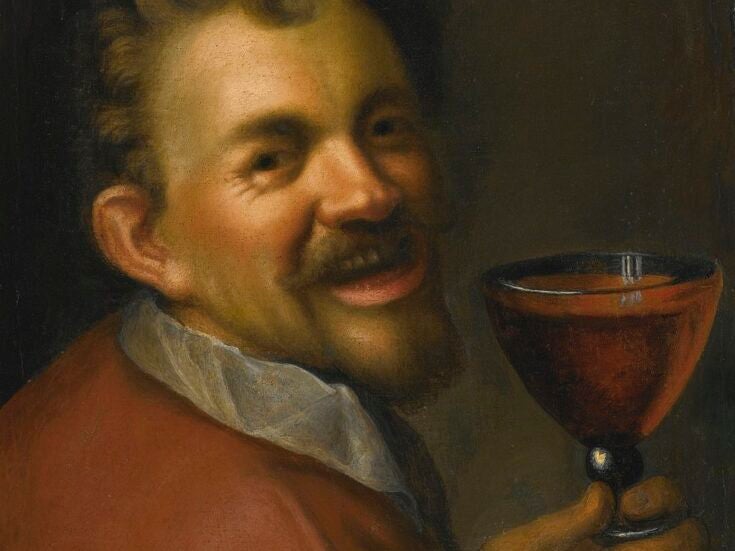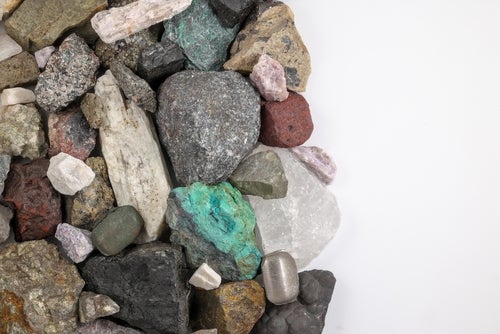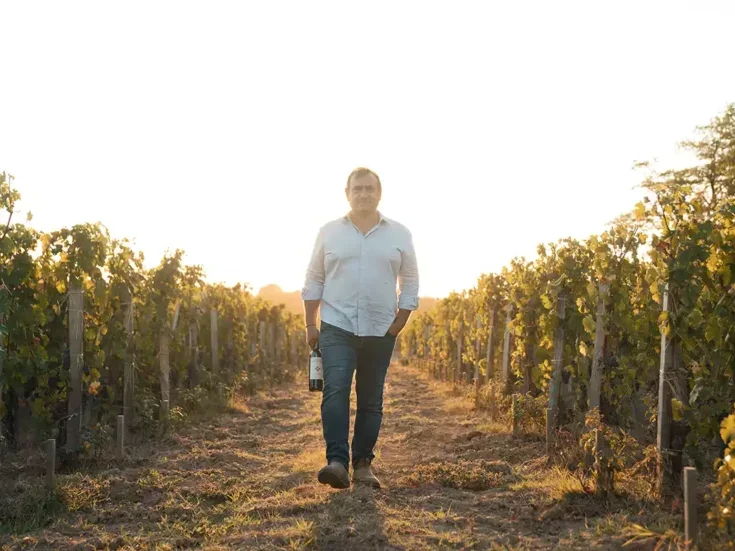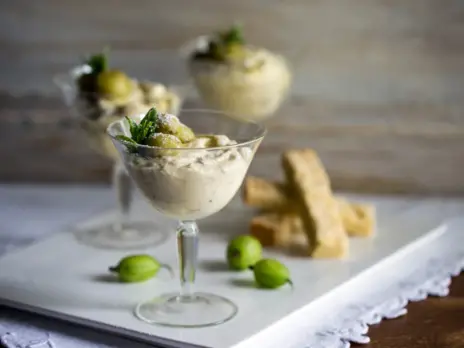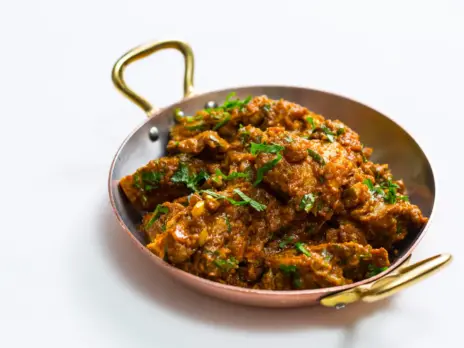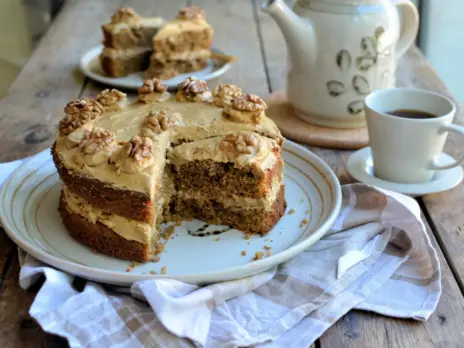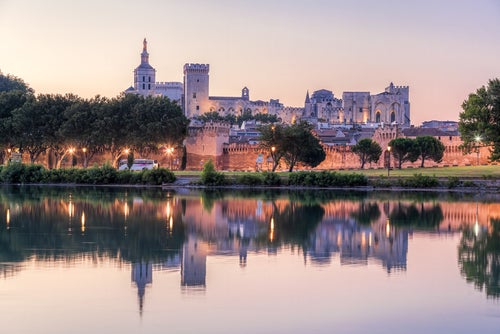
Since the 14th century, Tavel has been an island of pink in a sea of red. But the Southern Rhône village’s style has always been about more than mere refreshment, and as Jacqueline Friedrich explained in an article first published in WFW56 in 2017, today’s top producers are making serious, complex, food-friendly wines.
Yes, the placement of that apostrophe is intentional. Tavel, population 1,700, is a small village located 15km (10 miles) northwest of Avignon on the right bank of the Rhône in the Gard department. Tavel AOP was the first and is still one of the only appellations in France devoted entirely to rosé wines. Although wine has been made here ever since Roman times (and perhaps earlier) and is said to have been the favorite quaff of Philippe le Bel, as well as François 1, local lore credits the presence of the popes in Avignon, as well as in nearby Châteauneuf-du-Pape, with the style of the appellation’s wine.
The story—whether apocryphal or not—is an amiable one. Its source is Guillaume Dumoulin and originates with his great-grandfather Eugène, the founder of one of the Tavel’s most venerable domaines, the Château de Trinquevedel. In the 14th century, according to Dumoulin, Pope Innocent VI (1352–62), a great lover of wine in general and of Châteauneufdu- Pape (both red and white) in particular, asked Tavel to make wines that were lighter in color and in alcohol than those reds from across the river. And so, the good folk of Tavel complied. They began making wine of a color that came to be called rubis teinté d’or. Thus although Tavel is classically categorized as a rosé, historically it was closer to a light red, a clairet, which presumably was the color of the wine furnished for the pope by the monks at the Prieuré de Montézargues in Tavel. And even after Pope Gregory XI moved the papal court back to Rome in 1377, wines from Tavel were exported to Italy.
A tacit agreement with Châteauneuf?
Fast-forward to 1936, the year of the founding of the appellations of origin under the leadership of the Baron le Roy of Châteauneuf-du-Pape. During a trip to Paris with a number of vignerons from Tavel, Cassis, Arbois, and Cognac, Le Roy allegedly entered into a tacit agreement that Châteauneuf-du- Pape might conserve the priority of producing whites and reds, leaving Tavel the premier producer of rosé. (This might also explain why there has never been a rosé version of Châteauneuf-du-Pape.) And so it came to pass that on May 15, 1936, the appellation of Tavel was created. By law, it was a rosé made from a blend of grapes, chiefly Grenache, plus Cinsault, Clairette, Picpoul, Calitor, Bourboulenc, Mourvèdre, Syrah, and Carignan. It’s perhaps not surprising that the grape varieties cultivated resemble those planted in Châteauneuf-du-Pape.
Tavel’s soils, too, recall those of its prestigious neighbor. Three types of soil are considered the finest. The first—found, for example, in the lieu-dit Vestides—corresponds to the sharp chalky white stones called lauzes that cover the area west of the village. The lieu-dit Olivet, on the well-exposed terraces and gentle slopes southeast of the village, is covered in light, permeable soils of sand and stone. Vallongues, one of the most celebrated place-names, lies to the north of the village and, though the landscape is less dramatic, most resembles the vineyards of Châteauneuf, carpeted as it is with heavy quartzite stones the size of loaves of country bread.
Tavel’s method of vinification, however, shares nothing with Châteauneuf-du-Pape. Grapes are pressed lightly, sometimes destemmed, sometimes not, then undergo a cold soaking for from 12 to 36 hours (and often longer), before decanting and fermenting at temperatures no higher than 72°F (22°C). Some wines undergo malolactic; others do not. The wines then age in tank for anywhere from several months to more than a year before being bottled. The resulting wines range from deep salmon pink, often glinting orange or deeper pink; others are darker still, as if draped with a purple veil. Make no mistake about it, these are serious wines—wines to sip, to linger over, to watch evolve. Attention should be paid. They are also wonderful food wines, perfect for exotic cuisines—from Moroccan lamb-and-fruit tagines and bstillas, to nems and samosas, as well as all manner of occidental fare— from vegetable flans, to goat cheese, raclette, and charcuterie, as well as smoked fish, even kedgeree.
Roughly 100 producers and 1,000 hectares
In May 1936, Tavel had 354ha (875 acres) of vines; today there are roughly 1,000ha (2,470 acres), producing 41,200hl yearly. There are 111 producers of Tavel, of which 106 are vignerons. What follows are brief overviews of eight producers. Many of the wines were tasted during a visit to the region in the spring of 2015. Later vintages were sampled at home in 2016 and 2017. Fans of Tavel might wonder about the absence of the trendy Domaine de l’Anglore. Here’s the reason: Eric Pfifferling, l’Anglore’s owner, canceled our scheduled interview during my visit to Tavel a half-hour before it was to take place, and he repeatedly refused to send samples. Many of the wines described below come from the 2014 vintage. According to vintner Richard Maby, 2014 was a nightmare. “From July on,” he said, “it rained all the time. We had to remove a lot of grapes, deleaf, remove the rot. We made three passes through the vineyard. And it rained during harvest, too. We had to pick fast.” Whatever these producers did, it worked. The 2014s described below were delicious.
Château de Trinquevedel
Guillaume Demoulin works 30ha (74 acres) of vines in Tavel and 40 ares (one acre) in neighboring Lirac. An agricultural engineer who studied in Belgium and the University of Avignon, he took over the domaine in 2006 when his father, an enologist, died at the young age of 51. Essentially following the principles of sustainable farming, Demoulin says he makes his own rules. Depending on the parcel, his soils—sand with quartzite cobbles, calcareous stones, as well as silty clay—are well drained, and because the vines’ roots go deep, they rarely suffer from drought.
Demoulin makes three types of Tavel. The first, which debuted in 2011, is called Autrementavel. Intended to be a lively summer quaff—a wine to drink at a barbecue or on the beach— the wine’s style, Demoulin says, was dictated by consumer demands. Harvested by hand and machine, Autrementavel is usually 80% Grenache—often picked at a bit less than full ripeness—and 20% Cinsault. The grapes undergo a cold soak for 12 hours at 68°F (12°C) before being pressed and severely decanted, then fermented at 63°F (17°C). The wine is filtered at Christmas and bottled in January. The 2014, 13.5% ABV, was a pretty pink with light, floral lemon-zest and pale-fruit aromas and a hint of minerality. Nicely structured, with good balance and length, it was a rather serious summer wine but more happy-go-lucky than the style of Tavel Demoulin prefers to make, which is embodied by the two cuvées that follow.
Trinquevedel’s Cuvée Traditionnel’s blend varies from vintage to vintage but is chiefly Grenache (mostly noir but some blanc), followed by Cinsault, Clairette, and Syrah, the balance made up of small proportions of Mourvèdre and Bourboulenc. Grapes are sorted and destemmed, then coldsoaked for anything from 12 to 48 hours, after which the grapes are pressed. Fermentation, which lasts 20 days, occurs in cement tanks at 17%. The wine ages in tanks for six to nine months before bottling. A deeper pink than the previous wine, the 2014 was a full, fresh, mouth-filling wine flavors of orange zest, crushed strawberry, rose petals, and grenadine. A long, meaty, lip-smacking rosé. The 2015 was so smooth that it was nearly silky, a well-defined mix of fruit flavors, among them apricot and pear along with a flinty backdrop. The long finish reprised all the above flavors.
Much as I love the Cuvée Traditionnel, the recently added Les Vignes d’Eugene, my new favorite, is made from 80-yearold vines planted by Eugene himself. A blend of Grenache, Syrah, and Clairette, the grapes are harvested in October, one month after the normal date. A 48-hour cold maceration is followed by fermentation with indigenous yeasts that lasts for about 20 days. Unlike the two previous cuvées, Les Vignes d’Eugene undergoes malolactic fermentation, then ages in tank for 18–20 months. The 2014 was fragrant, fresh, and emphatically flinty. Serious indeed. The 2013 was a deep pink with flashes of orange and red. Velvety, tight, and bracingly tannic, its flintiness was tenderly offset by flavors of candied orange and heirloom roses. Here was a Tavel begging to be paired with Moroccan food.
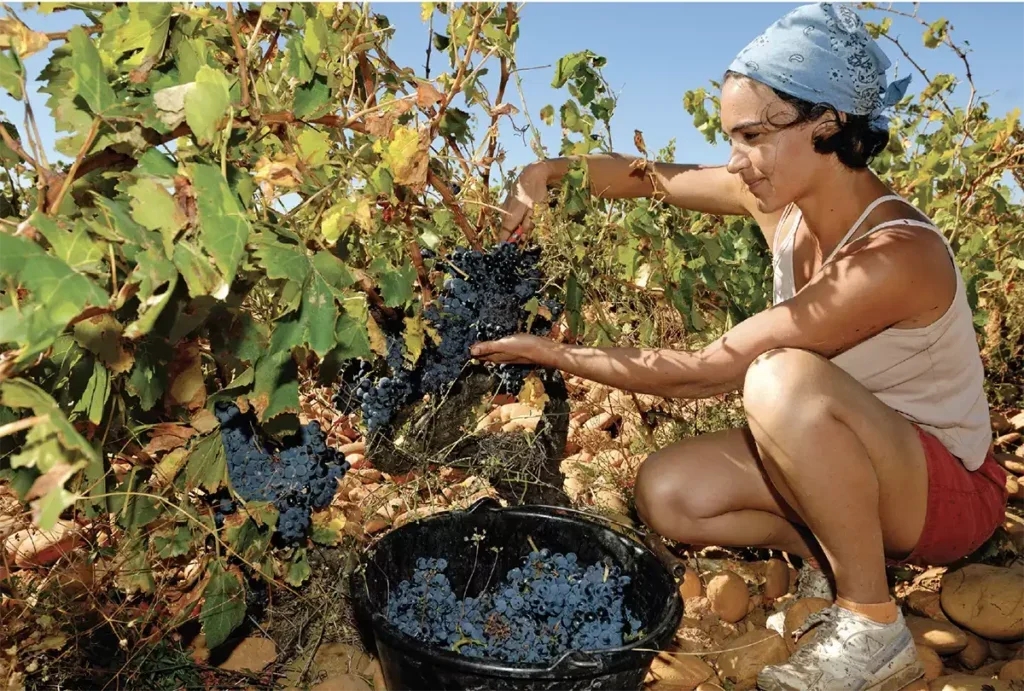
Domaine Maby
Fifty-something Richard Maby’s grandfather created the domaine in 1950, putting together 64ha (158 acres), 23ha (57 acres) of which are in Tavel, and 30ha (74 acres) in neighboring Lirac. The remainder are in the Côtes du Rhône and IGP Coteaux de Pont de Gard. Maby, who had always been passionate about wine, took over in 2005, having worked in finance. He practices sustainable farming, tills the soil, cluster-thins, and harvests by hand, only in the cool of the morning.
His Tavel grapes undergo cold maceration for a day or two before fermenting for a month at 57°F–61°F (14°C–16°C) in stainless-steel tanks. The wines do not go through malolactic, and Maby stirs up the lees regularly.
He makes two cuvées of Tavel. The first is La Forcardière, whose grapes—mostly Grenache Noir (74%)—come from all three of the appellation’s terroirs. The wine is bottled in February. Deep pink with flashes of orange, the 2014 had an admirable sense of place, a real identity. It was fresh, potent, and structured, with a bit of CO2, which Maby deliberately keeps and which punches up the flavors of lemon zests and Provençal herbs.
Prima Donna is a sélection parcellaire from Maby’s best terroir—on the Vallongue with its ankle-breaking cobbles. A blend of Grenache Noir and Cinsault, the grapes undergo a 48-hour cold-soak before fermenting at low temperatures. Judging by two vintages—2014 and 2015—Prima Donna’s color calls to mind the word clairet. The wines, both 14.5% ABV, are a pale, translucent red. They are big and supple, with notes of strawberries and stone fruit. The 2015 seemed to have some residual sugar, so I might serve that with a fruit tart, while the 2014 would be lovely with Moroccan dishes, from bstillas to tagines.
Domaine de la Mordorée
A substantial, eco-serious domaine with 60ha (148 acres) of vines over 38 plots, Mordorée makes wine in Châteauneuf-du- Pape, Lirac, Côtes du Rhône, and as Vin de France, as well as two cuvées of Tavel that usually weigh in at 14.5% ABV. The first, Dame Rousse, is 60% Grenache, 10% each of Cinsault, Syrah, and Mourvèdre, and 5% each of Clairette and Bourboulenc. The grapes come from a 9ha (22-acre) plot with a mix of Tavel’s classic soils—galets roulés, lauzes, and sand. They are harvested by trie and destemmed, then undergo a cold maceration for 36–48 hours before fermented at 64°F (18°C).
Flavors of rose petal, raspberry, and flint mingled in the grippy, characterful 2016. The 2015 was a solid wine, big and flavorful, with appetizing bitterness accentuating the sweetness of the fruit. The 2014, the result of a lighter vintage, was fresh and suave with attractive flavors of peach.
La Reine des Bois owes its force to the stony soils of the Vallongue. The grapes—60% Grenache, 15% Clairette, 10% each of Syrah and Cinsault, and 5% Bourboulenc—undergo a 48-hour cold maceration before fermenting at 64°F (18°C). The berry-scented 2016 was a potent wine, full, meaty, and lip-smacking. Marvelously textured, it recalled Rabelais’s “well woven” wine of “taffeta.” The 2014 was a very big rosé, taut and strong, with flavors of ripe peach, raspberry, rose petal, stone fruit, and red berries. It would pair well with exotic cuisines, as well as peach tarts.
Domaine des Carabinieres
Christian Leperchois and son Fabien farm their 40ha (100 acres) of vines according to biodynamic principles. In addition to Tavel, they produce Lirac, Côtes du Rhône, and Pays d’Oc.
Their Tavel comes from a 4ha (10-acre) plot on lauzes soils from vines planted in the 1950s. The grapes are harvested at night when temperatures are cool then macerate for 24–36 hours before beginning fermentation with wild yeasts. Temperatures are kept to a cool 70°F (21°C). Both the 2014 and the 2015, each 13% ABV, were blends of 50% Grenache, 20% Cinsault, and 15% each of Clairette and Syrah. The 2014 was suave and nicely structured, with delicate flavors of raspberries. The 2015, pure and tender, was floral, with delicate fruit accented by lemon zests. Too easy to drink, each of them.
Domaine St Ferreol Jean-Marie Bastide started working with his grandfather in 1977. When the latter died in 1983, Bastide was able to acquire part of the Tavel property, a bit under 17ha (42 acres) planted with old vines. Its soils are a mix of sand, quartzite stones embedded in clay, limestone pebbles mixed with red clay, and galets roulés. Bastide continued farming much as his grandfather had—to wit, essentially organic, or what he considers “truly organic.” He works the vines with a mule, keeps yields to no more than 35hl/ha, and harvests by hand.
Generally a blend of 60% Grenache, 20% Cinsault, 10% Syrah, and the balance varying amounts of Bourboulenc, Mourvèdre, and Clairette, the grapes undergo cold maceration for between 8 and 36 hours and ferment at cool temperatures. The 2015, firm, flavorful, and grippy, had a definite sense of place and an appetizing bitterness that lasted through its long finish. The 2014, 13.5% ABV rather than 14.5% for the 2015, was nicely composed, smooth, with light berry flavors and a fine citric lift.
Le Mas Duclaux Benoît and Nathalie Duclaux practice sustainable agriculture on their 12ha (30 acres) of vines, 5ha (12 acres) of which come from Nathalie’s family and are part of the Tavel appellation. Benoît, who was a chef, makes wines to go with meals. They should be, he says, full-bodied, appetizing, and deeply colored, and have a story to tell.
Grown on the appellation’s classic soils, his blend of 40% Grenache Noir and Blanc, 40% Syrah, 20% Cinsault, Clairette, and Bourboulenc undergoes a 26–48-hour cold maceration before fermenting at low temperatures. Surprisingly pale for a rosé with both a high proportion of Syrah and a relatively long cold maceration, the 2015 was a deep pink and alluringly fragrant. Floral notes blended with those of citrus and stone fruit. The wine was firm, compact, and sapid. The 2014 offering—14% ABV, as was the 2015—was fresh and tight and had good traction. A satisfying wine with light berry notes and minerals.
Domaine Roc de l’Olivet
Thierry Valente has 5ha (12 acres) of old vines on the appellation’s signature soils. His Tavels—both in the 2014 and the richer 2015 vintage—were fragrant, floral, and nicely structured. Pleasant meal or apéritif wines.
Palai Mignon
This ambitious little domaine was a wonderful discovery. Cyril Amido left the local cooperative in 2006 and began converting his vines—some 4ha (10 acres) in Tavel, spread out over its three classic soils—to organic farming. He tills the soil, harvests by successive passes through the vines, and follows lunar cycles for his work in the cellar.
Amido’s Tavels are composed of 60% Grenache, 35% Cinsault, and 5% Clairette. The grapes are cold soaked for 12–24 hours and ferment at 66°F (19°C), using only wild yeasts. The 2014 was tight, with excellent grip. A subtle but generous wine, it had delicious berry fruit and an enticing edge of bitterness—truly lovely. My notes on his 2012 Tavel are nearly identical to those for the 2014. After tasting his Tavels, I’m eager to discover what Amido does with his 3ha (7 acres) of vines in neighboring Lirac.

